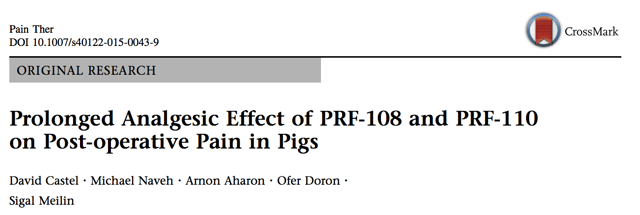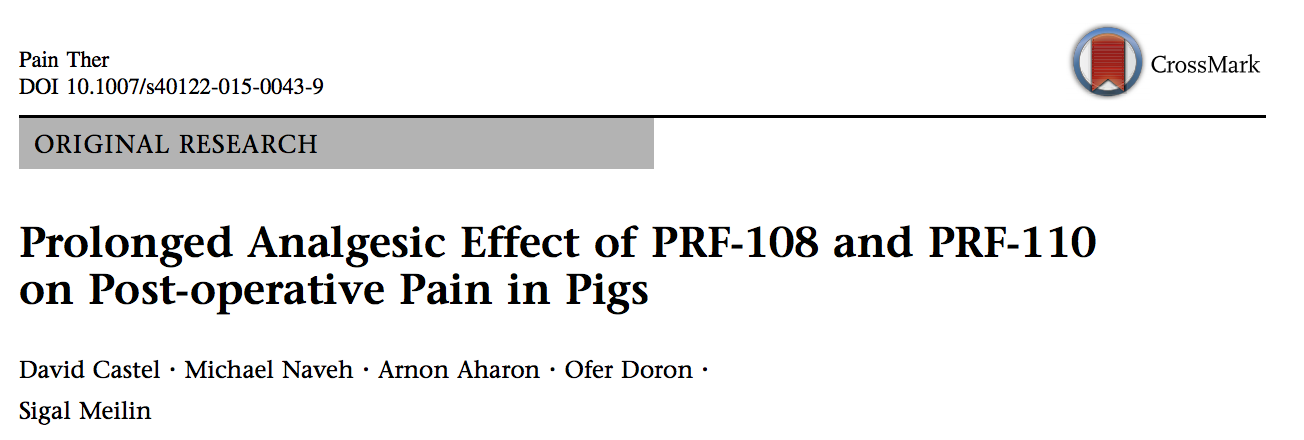MD Biosciences, in collaboration with PainReform Ltd tested two new anesthetic formulations in the recent publication “Prolonged Analgesic Effect of PRF-108 and PRF-110 on Post-operative Pain in Pigs”, on which MD Biosciences’ CSO Sigal Meilin was the principal author. This article demonstrated how the pig POP model could be used to assess the efficacy of new anesthetic test compounds or new formulations. Results indicate that the tested drug formulations showed great promise over current, commercially available anesthetics.

The Pig Post-Operative Pain Model
The pig post-operative pain, or pig POP, model is ideal for the development of new pain relieving compounds as pigs bare notable resemblance to human anatomy. This includes analogous dermal-epidermal thickness, well-developed rete ridges, dermal papillary bodies and abundant subdermal adipose tissue to humans. Functionally, pig and human are similar in epidermal turnover time, type of keratinous proteins and lipid composition of the stratum corneum. Additionally, pig skin innervation resembles human skin with C- fiber classes correlated in both distribution and axonal excitability changes. It has previously been shown that the duration of analgesia from local treatments such as ropivacaine is similar in pigs and humans, further supporting the use of the pig as a more appropriate and translatable model for developing new analgesic therapies.
Pig POP in Action
In our publication, the pig POP model was used to compare two new extended release-formulations (PRF-108 and PRF-110) of the anesthetic ropivacaine to the commercially available ropivacaine solution Naropin® (AstraZenica), which is currently in use in the clinic for local or regional anesthesia for surgery and acute pain management. Results show that the analgesic activity level and duration of PRF-108 and PRF-110, developed by PainReform Ltd, were improved when compared to Naropin®, demonstrating the utility of the pig POP model in local analgesic comparator studies. Additionally, the pig POP models pharmacokinetic (PK) and pharmacodynamic (PD) ratios of the commercial drug reflected that seen in humans, further indicating its value.
Click here or follow below link to read more on this publication.
http://www.ncbi.nlm.nih.gov/pubmed/26724813
See all our Post-operative models!




